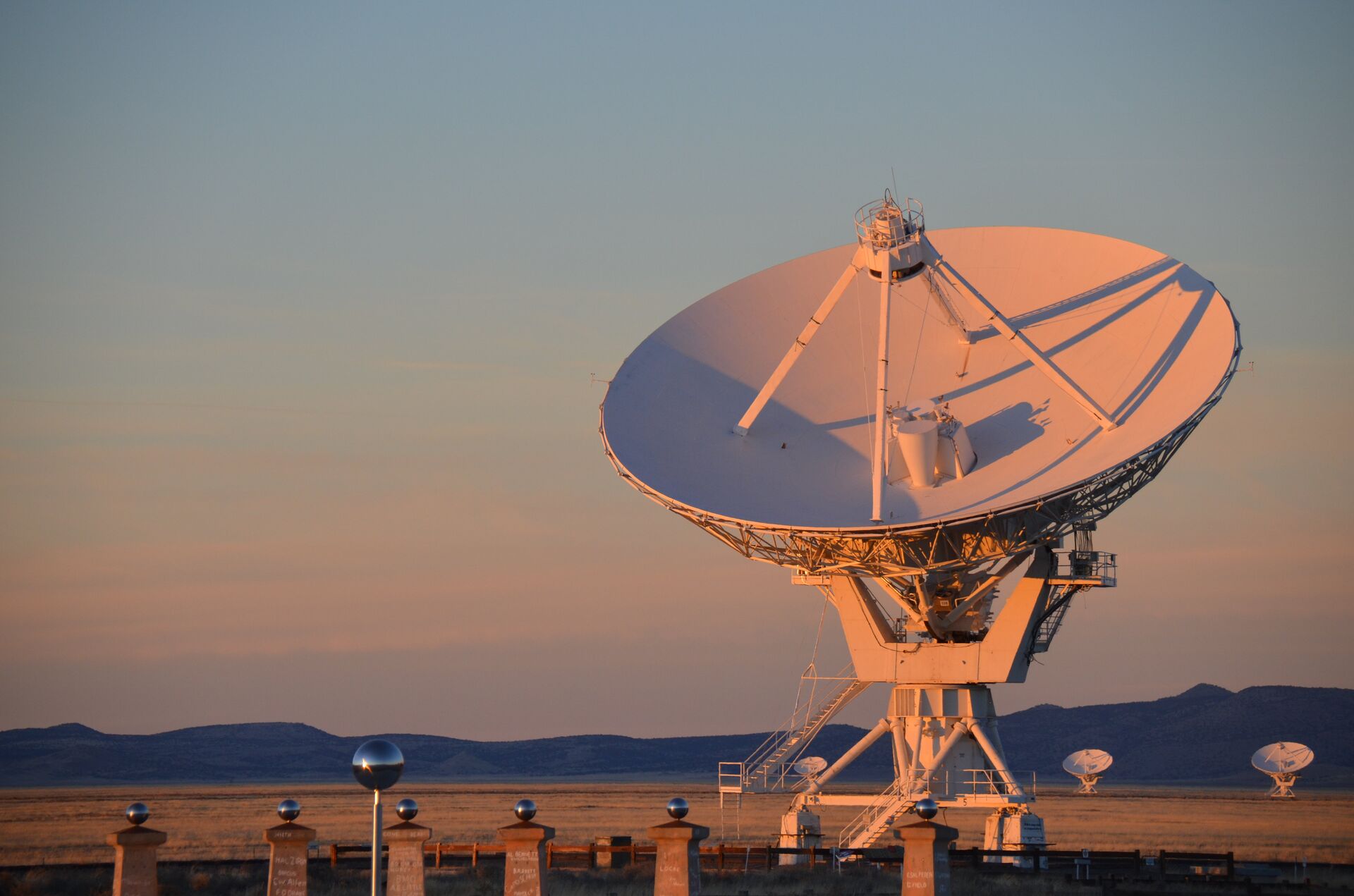https://sputnikglobe.com/20221027/cosmic-rays-propelled-massive-galactic-winds-in-universes-early-history-study-reveals-1102769749.html
Cosmic Rays Propelled Massive Galactic Winds in Universe’s Early History, Study Reveals
Cosmic Rays Propelled Massive Galactic Winds in Universe’s Early History, Study Reveals
Sputnik International
An international team of scientists was carrying out detailed, multi-wavelength observations of M33, a spiral galaxy nearly three million light-years away... 27.10.2022, Sputnik International
2022-10-27T17:46+0000
2022-10-27T17:46+0000
2022-10-27T17:46+0000
science & tech
very large array (vla) radio telescope observatory
cosmic rays
supernova
black hole
https://cdn1.img.sputnikglobe.com/img/102377/32/1023773264_0:113:1025:689_1920x0_80_0_0_4d35e3e466ba3032888a16b4ee204fca.jpg
Cosmic rays have been identified as likely playing an important role in driving galactic winds in a study by an international team of astronomers.Using the National Science Foundation's Karl G. Jansky Very Large Array (VLA) radio observatory, the team was studying the spiral galaxy M33, part of the Local Group of galaxies that includes the Milky Way. Data from a spate of earlier observations with the VLA, as well as the Effelsberg radio telescope in Germany, and millimeter-wave, visible-light, and infrared telescopes were utilized by the astronomers to find that fast-moving cosmic ray electrons can drive galactic winds. These winds are instrumental in slowing down the rate of star formation as galaxies evolve.Previously, it was assumed that powerful waves released by supernova explosions and jets spurting from black holes in galactic cores added velocity to those winds.Another astronomer involved in the research, William Cotton, of the National Radio Astronomy Observatory, said that VLA observations indicated that cosmic rays in M33 were “escaping the regions where they are born” and subsequently driving “more extensive winds.”The revelation that cosmic rays are possibly a more general cause of galactic winds, specifically, dating to earlier times in the universe's history, noted for prolific star formation, was reported by Tabatabaei, Cotton, and their colleagues in the October 25 issue of the Monthly Notices of the Royal Astronomical Society.The astronomers concluded that the discovered mechanism would undoubtedly facilitate a better understanding the evolution of galaxies over time.
https://sputnikglobe.com/20221009/images-from-james-webb-telescope-show-bones-of-a-far-away-galaxy-1101646805.html
Sputnik International
feedback@sputniknews.com
+74956456601
MIA „Rosiya Segodnya“
2022
News
en_EN
Sputnik International
feedback@sputniknews.com
+74956456601
MIA „Rosiya Segodnya“
Sputnik International
feedback@sputniknews.com
+74956456601
MIA „Rosiya Segodnya“
science & tech, very large array (vla) radio telescope observatory, cosmic rays, supernova, black hole
science & tech, very large array (vla) radio telescope observatory, cosmic rays, supernova, black hole
Cosmic Rays Propelled Massive Galactic Winds in Universe’s Early History, Study Reveals
An international team of scientists was carrying out detailed, multi-wavelength observations of M33, a spiral galaxy nearly three million light-years away, using the Karl G. Jansky Very Large Array (VLA), a radio astronomy observatory located in central New Mexico, when they made their discovery.
Cosmic rays have been identified as likely playing an important role in driving galactic winds in a study by an international team of astronomers.
Using the National Science Foundation's Karl G. Jansky Very Large Array (VLA) radio observatory, the team was
studying the spiral galaxy M33, part of the Local Group of galaxies that includes the Milky Way. Data from a spate of earlier observations with the VLA, as well as the Effelsberg radio telescope in Germany, and millimeter-wave, visible-light, and infrared telescopes were utilized by the astronomers to find that fast-moving cosmic ray electrons can drive galactic winds. These winds are instrumental in slowing down the rate of star formation as galaxies evolve.
Previously, it was assumed that powerful waves released by supernova explosions and jets spurting from black holes in galactic cores added velocity to those winds.
"We have seen galactic winds driven by cosmic rays in our own Milky Way and the Andromeda galaxy, which have much weaker rates of star formation, but not before in a galaxy such as M33," Fatemah Tabatabaei of the Institute for Research in Fundamental Sciences in Iran told media.
Another astronomer involved in the research, William Cotton, of the National Radio Astronomy Observatory, said that VLA observations indicated that cosmic rays in M33 were “escaping the regions where they are born” and subsequently driving “more extensive winds.”
The revelation that cosmic rays are possibly a more general cause of
galactic winds, specifically, dating to earlier times in the universe's history, noted for prolific star formation, was reported by Tabatabaei, Cotton, and their colleagues in the October 25 issue of the Monthly Notices of the Royal Astronomical Society.
The astronomers concluded that the discovered mechanism would undoubtedly facilitate a better understanding the evolution of galaxies over time.

9 October 2022, 07:03 GMT





